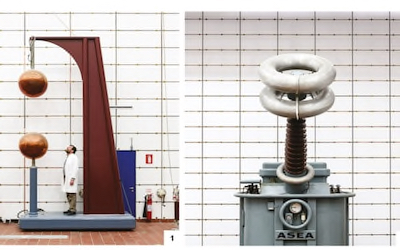随着PTE考生对PTE口语和PTE听力的重视,大家口语和听力的分数得到极大提高,但是PTE阅读渐渐成为考生们新的难题。
墨尔本悉尼文波PTE特别为PTE考生们挑选了适合练习PTE阅读的文章,主题,内容,长度都与PTE阅读题中的文章相似。激活学过的词汇,更新新的词汇,提高阅读速度,全面提升自己的阅读能力。
Wind turbines are lightning magnets—and strikes on these tall, spinning structures can cause significant damage. Blades explode; generators and control system electronics fry. To figure out how to safely disperse lightning, turbine manufacturers have turned to the Technical University of Denmark’s High Voltage Lab. Using giant versions of standard electrical devices such as sphere gaps, transformers and capacitors, the facility can generate huge arcs of electricity—up to 800,000 volts AC. The equipment helps companies test how new turbine parts or mechanisms will respond to electrical surges out in the field.
“Many high-voltage labs, they look like something from the 1960s,” says Joachim Holbøll, a professor and deputy head of the university’s Center for Electric Power and Energy. “But we are doing necessary stuff in there with the newest equipment. Parts of this will always look a little old-fashioned, but that is simply because it works.”
The lab is also tackling a new problem: wind turbines are getting so tall that they frequently generate “up lightning.” This type originates from the turbine’s own electric field and leaps from the tip of a blade to meet a downward bolt. The direction of the bolt does not change the form of protections that the turbines need, Holbøll says. But understanding these dynamics is critical to modeling the frequency of lightning strikes at wind farms, and the High Voltage Lab is working to verify theoretical and computational descriptions of this phenomenon. In 2015 wind power provided 42 percent of the electricity Denmark consumed.
Spinning: v. 旋转(spin的现在分词)
Disperse: vt.分散,使散开;adj. 分散的。
墨尔本悉尼文波PTE原创首发
更多精彩请持续关注微信wenbo_tv2。





